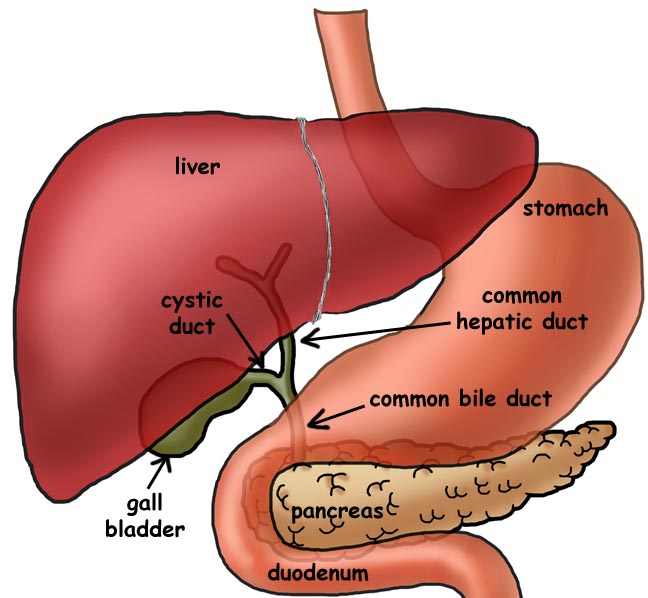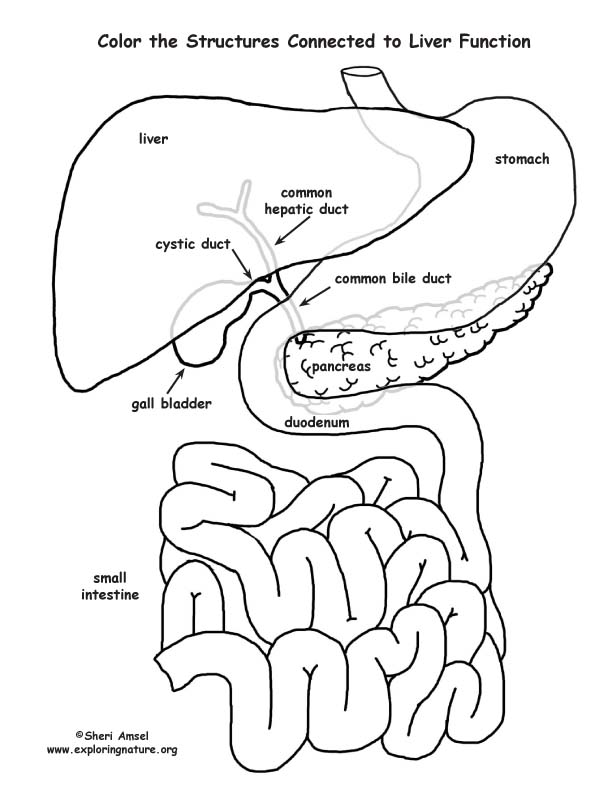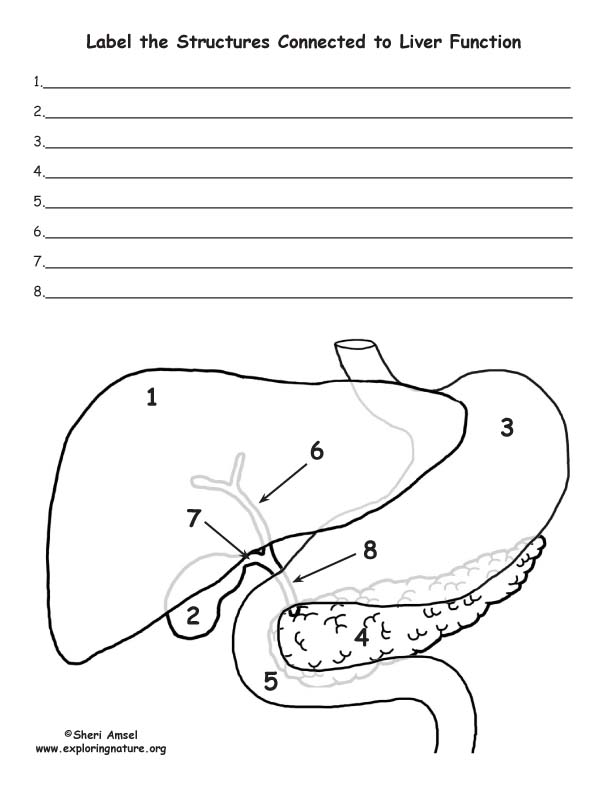

The liver and the gall bladder are considered accessory organs of the small intestine.
The liver is a large, maroon-colored organ weighing about three pounds. It is found on the right side (anatomical right) of the body under the muscular diaphragm and protected by the ribcage. It drapes over the gall bladder and part of the stomach and small intestine. It is made up of four lobes, the left lobe, right lobe, quadrate lobe and caudate lobe.
The liver is one of the most important organs of the body. Only one part of what it does has to do with aiding in digestion. It makes bile, an emulsifier that breaks down fats so that they can be absorbed into the blood in the small intestine. The bile will be secreted from the liver out into the common hepatic duct and up the cystic duct to the gall bladder where it is stored until needed.
It also:
The gall bladder is a small sac that stores bile made in the liver. When you eat a fatty meal, the gall bladder will squeeze out its bile through the cystic duct down into the common bile duct that carries it into the first section of the small intestine (the duodenum) as food leaves the stomach as a liquid mix, called chyme. The bile breaks down fat in the chyme so it can be absorbed into the bloodstream.
Sometimes the gall bladder will form small bile lumps called gallstones that will cause pain when fatty food signals the gallbladder to squeeze out bile. Gallstones and other gall bladder diseases will require doctors to remove the gall bladder and cystic duct. Because the liver makes bile and can still secrete it through the common hepatic duct > into the common bile duct and then > the small intestine, you can live without a gall bladder, but a low fat diet afterward would be recommended.
LS1.A Structure and Function
K-2 All organisms have external parts that they use to perform daily functions.
3-5 Organisms have both internal and external macroscopic structures that allow for growth, survival, behavior, and reproduction.
6-8 All living things are made up of cells. In organisms, cells work together to form
tissues and organs that are specialized for particular body functions.
9-12 Systems of specialized cells within organisms help perform essential functions of life. Any one system in an organism is made up of numerous parts. Feedback mechanisms maintain an organism’s internal conditions within certain limits and mediate behaviors.
When you research information you must cite the reference. Citing for websites is different from citing from books, magazines and periodicals. The style of citing shown here is from the MLA Style Citations (Modern Language Association).
When citing a WEBSITE the general format is as follows.
Author Last Name, First Name(s). "Title: Subtitle of Part of Web Page, if appropriate." Title: Subtitle: Section of Page if appropriate. Sponsoring/Publishing Agency, If Given. Additional significant descriptive information. Date of Electronic Publication or other Date, such as Last Updated. Day Month Year of access < URL >.
Amsel, Sheri. "Liver and Gall Bladder" Exploring Nature Educational Resource ©2005-2024. December 16, 2024
< http://www.exploringnature.org/db/view/1050 >


